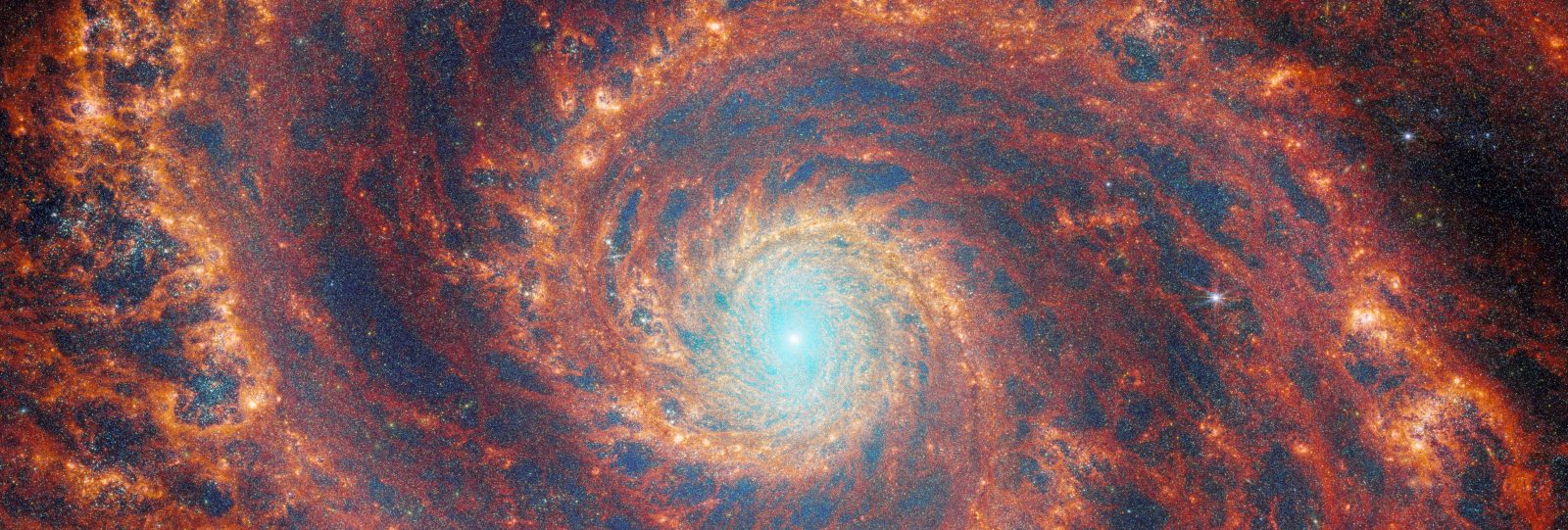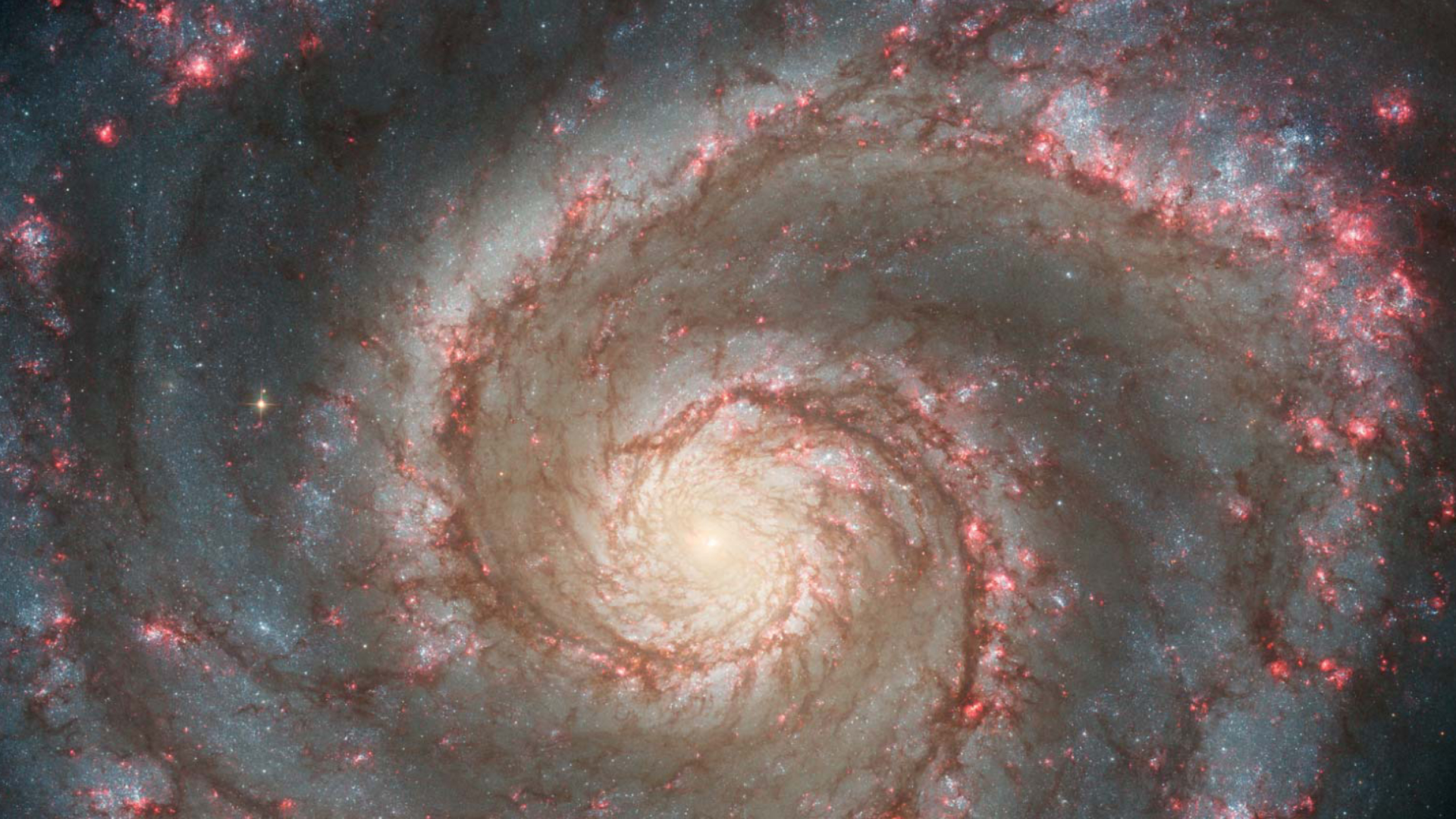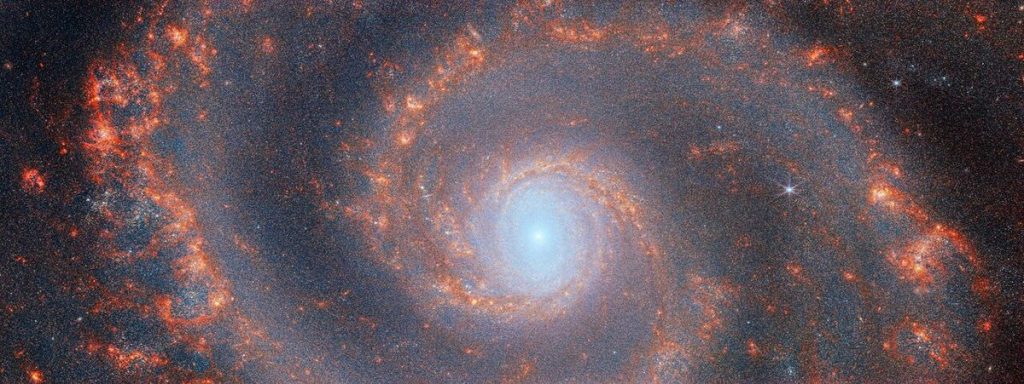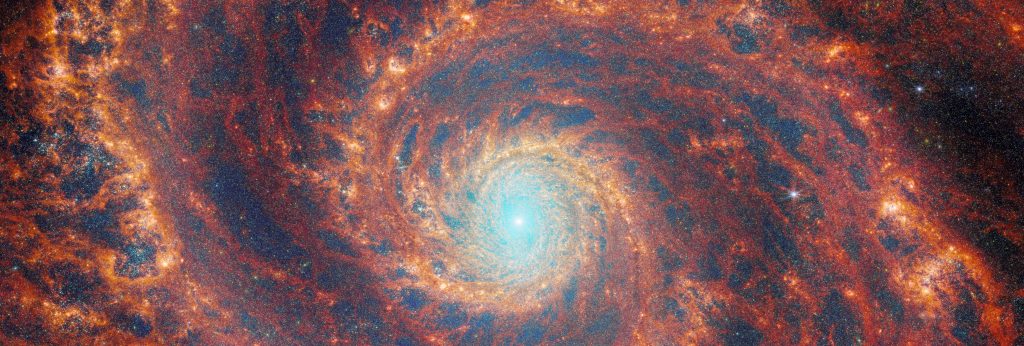
It’s clear the James Webb Space Telescope was set to stun in newly released galactic portraits of galaxy M51. Researchers tapped into two of the telescope’s powerful infrared instruments to capture the distant object. Let’s take a look!
Galaxy M51, also known as Messier 51, is a famous spiral galaxy located about 31 million light-years from Earth. It’s a popular target for amateur astronomers and for researchers using billion-dollar telescopes.
The Hubble Space Telescope first captured the galaxy in 2017, showing its stunning spiral arms. These basically act as star-formation factories, compressing hydrogen gas and creating new stars over thousands of years.
Unlike Hubble, which can only observe visible and ultraviolet light, the James Webb Space Telescope specializes in infrared observations. This makes it key for studying distant galaxies, like M51, because it can see through dust clouds that normally obscure visible light.
Galaxy M51: Hubble vs. Webb
Here is a comparison of Hubble’s 2017 observation vs. the one of the infrared images of galaxy M51 from the James Webb Space Telescope:


Thanks to the James Webb telescope’s suite of onboard scientific instruments, researchers are able to view galaxy M51 in many different wavelengths. This image above is a composite image that integrates data from Webb’s Mid-InfraRed Instrument (MIRI).
The European Space Agency describes it as an instrument that allows scientists to study objects and their immediate surroundings without being blinded by the immense light from the object itself, i.e. stars, superclusters, etc.
The following image was taken with Webb’s Near-InfraRed Camera (NIRCam). Using this particular instrument researchers are able to look at the more well-developed spiral arms of M51. NIRCam is one of the telescope’s most used instruments due to its ability to lock on to targets with very high precision, even moving ones.

Lastly, the image below is a composite image that integrates data from both Webb’s MIRI and NIRCam.

Looking for a decent telescope to observe galaxies like this? I’d highly recommend looking at these Celestron telescope options.
So, what now?
The James Webb telescope continues to open new doors in what many thought was possible.
For the first time, researchers and astronomers are seeing star clusters emerging from clouds far out in regions of deep space. The next step for many of them is to measure how long it takes for these stars to form out of the surrounding gases. This is often over thousands of years.
“By studying these processes, we will better understand how the star formation cycle and metal enrichment are regulated within galaxies as well as what are the time scales for planets and brown dwarfs to form,” stated the ESA in a press release on Tuesday.
M51 serves as a remarkable example of the interactions that can shape galaxies’ evolution over cosmic timescales. Its easily recognizable shape and interesting features continue to make it a beloved object of study in the field of astronomy.
FTC: We use income earning auto affiliate links. More.



Comments